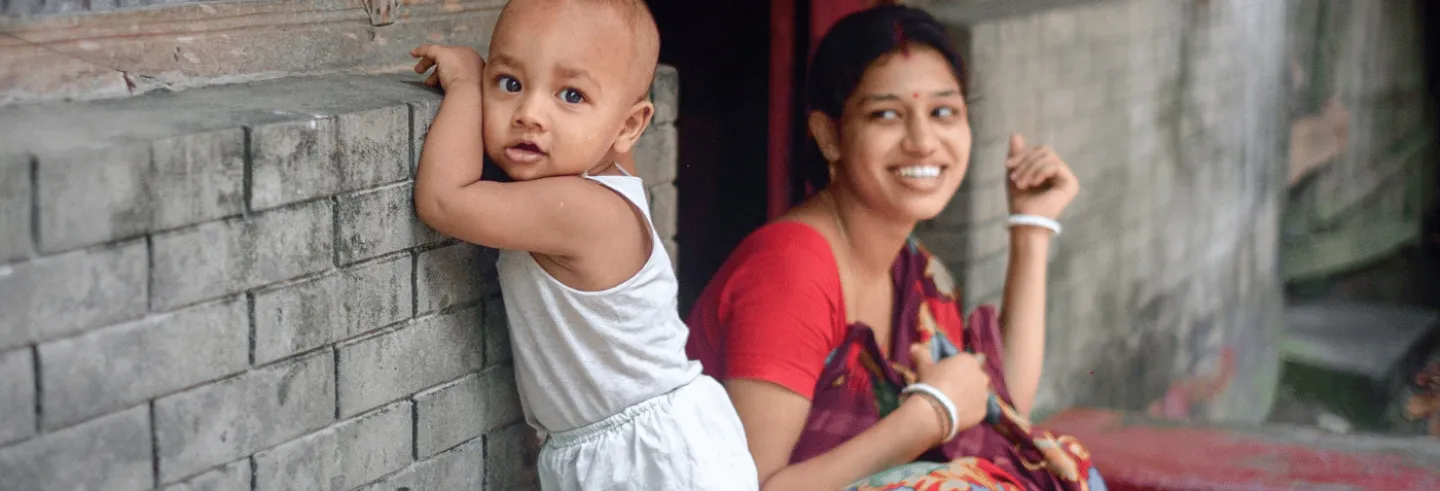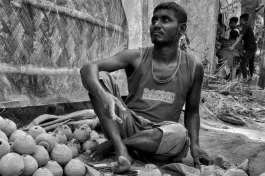In his recent Independence Day speech, Prime Minister Narendra Modi talked about increasing maternity leave for working women to 26 weeks from 12 as a mark of his government’s respect, sensitivity, and support for working women. While a step in the right direction, the government’s definition of ‘working women’ continues to excludes a large majority of women: those who engage in informal work as well as those who spend excessive time doing household work (Rajeshwari, Thakur, and Ojha 2024).
The latest publicly available data from India’s Time-Use Survey shows that on average, Indian women spend almost five hours per day in unpaid domestic work, thrice the amount of time spent by men (GOI 2020). Women also spend on average over two hours per day in caregiving work in both rural and urban areas, whereas men spend a little over one hour a day (GOI 2020). Domestic work in India is largely done by women of reproductive ages, who become the primary workers of the household after marriage (Jeffery, Jeffery, and Lyon 1989; Sharma 2018). Along with age, women’s work intersects with other axes of marginalisation such as those related to caste, class, and education status (Chakravarti 1993; Kalra and Priya 2020).
A large body of literature shows that incessant household work harms women’s health. Health issues caused by it range from fatigue, weakness, to chronic pain amongst women (Jeffery et al. 1989; Patel et al. 2005; Sharma 2018; Swaminathan 1997). In several studies, women themselves have highlighted that their domestic work, its gendered and compulsory nature, and its physical toll are the primary reasons for their ill health (Avotri and Walters 1999; Bisht 2014; Sharma 2018).
Work and health during maternity
What is the impact of continuous household work on rural women’s health especially during critical stages like maternity? There are no nationally representative, large-scale, government-led surveys to answer this question. However, findings from the Jachha Bachha Survey (JABS) conducted in six Indian states can shed some light (Drèze, Khera, and Somanchi 2021).
The JABS was conducted in 2019 to assess the status of maternity entitlements in rural India. The findings of the 2019 hold today for several reasons. First, the status of maternity entitlements in rural India has not improved in the last ten years and has reversed in the last few years (Drèze and Khera 2023). Second, despite modest changes in women’s labour force participation rates since 2019, the amount of household work they do is unlikely to have changed (Basole et al. 2023). Even when women gain more outside employment, the effects of increased paid work on household work as well as health would be ambiguous. Finally, given that this article focuses on social forces in rural areas, which are more persistent, the findings here are likely to remain salient.
This compulsory nature of household work does not spare women during the nursing period either when they must take care of not only themselves after childbirth but also a newborn.
JABS was conducted in one purposely selected district in six large north, central, and eastern states: Chhattisgarh, Himachal Pradesh, Jharkhand, Madhya Pradesh, Odisha, and Uttar Pradesh. Overall, 342 pregnant and 364 nursing women were interviewed. The survey had variations in terms of social background and literacy, though patterns reflect the social composition of the rural population of these states. While the questions for the survey were largely quantitative, investigators were encouraged to take rigorous qualitative notes throughout. Additionally, investigators were trained to take testimonies and case studies of specific persons and families to illustrate the situation on the ground. Lastly, investigators maintained a team diary to record field notes and other observations not covered in questionnaires.
The process of analysing qualitative data was iterative. It began during the fieldwork and debriefing of the survey when common themes emerged. For coding, I created data matrices that included each respondent, key concepts and information, and quotes. Such a matrix allows for both going deep into and stepping back from the qualitative data, thereby allowing both depth and breadth (Lareau 2021).
Back-breaking work
The most crucial finding from the JABS is that an overwhelming majority of women, nearly two-thirds, said that they did household work till the day of their delivery (Drèze et al. 2021). Most rural women, pregnant and nursing women included, work long hours inside and outside their homes in India. Indeed, when investigators reached our respondents, they found most of them deep into work. Field notes about encountering a respondent in Madhya Pradesh’s Umaria district read: “the respondent appeared frail and definitely exhausted; when we reached her, she was collecting wood for the fire.”
Women’s household work ranges from daily cooking and cleaning to lifting and carrying stuff, which continues throughout their pregnancy. Much of this work is done in positions that cause a strain such as from bending forward for long hours or carrying heavy loads on the head. Manju, an Adivasi woman from UP’s Sonbhadra district in her ninth month of pregnancy said: “I do feel like resting, but I do need to work. [I] need to go and collect firewood and water every day.” Another pregnant respondent, Basanti from Chhatisgarh’s Sarguja district, echoed what many other respondents felt when asked about housework: “I need to do the housework every day; who else will do it?” Like Manju and Basanti, several other women used phrases like “need to,” “have to,” “compelled to,” or “can’t skip” when talking about household work, indicating that they have little choice when it comes to domestic duties.
Anita Devi from UP’s Sonbhadra: “I would need to cook food and fetch water. Nobody was willing to fetch even a single bucket of water, I had to do all of it by myself.”
This compulsory nature of household work does not spare women during the nursing period either when they must take care of not only themselves after childbirth but also a newborn. Even with this new added responsibility, many women resumed domestic duties soon after delivery or discharge from the hospital. In Odisha’s Sundargarah district, Razia had fever and body ache post-delivery. But she had to take a pain killer and resume work soon after. Despite being the most educated person in her family, Razia reported that she did not get much rest from domestic work during her pregnancy. When asked how she felt about it, she said, “living in a large family and being the caregiver who is always ignored never feels good.”
Feelings of being ignored and uncared for were commonly expressed by women because of the lack of help they received in domestic work. The dismay was clear in the response of Anita Devi from UP’s Sonbhadra: “I would need to cook food and fetch water. Nobody was willing to fetch even a single bucket of water, I had to do all of it by myself.” Indeed, more than one in five nursing women in the JABS sample revealed that they had no one else to help with domestic work (Drèze et al. 2021).
Whenever women did get some help, it was largely from other female members of the household and rarely from their husbands or other men in the family. In the absence of such participation from men, domestic and caregiving work gets passed from one woman to the other while maintaining its gendered and compulsory nature.
Lack of rest
Given the compulsion of household work and with little to no help available, most pregnant and nursing women hardly get an adequate amount of rest. Unsurprisingly, two in five women who gave birth in six months preceding the survey reported not getting enough rest. Women, like Parwati from UP, often had to compromise resting to finish the work: “There’s a lot of work to be done, and if I rest, all that work will pile up.”
In addition to work-related burdens, complaints and taunts from other family members were reasons why women found it hard to rest. Even asking women about rest often invoked strong reactions from those around them. For example, when investigators were talking one respondent, her mother-in-law taunted her in front of investigators and said that she got up at 8 in the morning. In a separate incident, a group of men playing cards in front of the house, on hearing the question about rest, mocked the respondent before she could answer. Yet another mother-in-law became upset when she heard the questions about rest and argued: “if the bahu [daughter-in-law] of the house does not do work, then who is going to do the household chores? I don’t understand this concept of rest. This is wrong.”
One of the most common justifications given by family members for not allowing women to rest during pregnancy was related to notions of the 'ideal' daughter-in-law and worker of the household. As such, women who rested were seen as lazy and thus inadequate. Talking about her sister-in-law, one family member complained:
“she only cooks and does no other work. In our tradition, a pregnant lady must not rest at all. She must work and keep herself busy at all times. Otherwise, she will become a lazy person.”
For most women, the only place that offered some rest and respite from daunting domestic work was their maternal home. Radha from MP’s Umaria district worked in the fields and at home until she came to her brother’s house in her eighth month of pregnancy. While she got no rest at her in-laws’, she was able to take 2-3 hours of rest every day at her brother’s house.
“If the bahu of the house does not do work, then who is going to do the household chores? I don’t understand this concept of rest. This is wrong.”
In several other cases, maternal homes offered not just much-needed rest to these women but also pitched in with bearing healthcare or other pregnancy-related expenditures. The maternal home, therefore, often treated them as persons needing the care and rest that they did not get in their husband’s house where they were treated mainly as workers and caregivers.
Precarious health
The extent and nature of women’s work and an overall lack of rest and care have adverse impacts on women’s health during and after the critical life stage of pregnancy. One of the most common health issues that women reported was weakness. In quantitative findings, almost half of pregnant women reported at least one critical symptom of pregnancy-related weakness. In several instances, as indicated by these field notes of the surveyors, pregnant women looked so weak and thin that it was hard to tell that they were pregnant. “Respondent was very skinny and looked very weak for someone who was eight months pregnant” was a typical observation.
Women often linked their weakness and fatigue to excess work and lack of rest. Gayatri from Chhatisgarh’s Sarguja district reported dizziness and extreme weakness. While she was able to get out of agricultural work in the initial months of her pregnancy, household work continued: “Work at home adds to the extreme weakness so I feel more tired.”
The other common health issue that women reported was also related to work and exhaustion: physical pain. Physical pain, especially back pain, was so pervasive that there was rarely an interview when it was not mentioned.. When the survey team met six-month-pregnant Meera in UP’s Sonbhadra district, she had just returned from the field. She complained of working long hours and back pain:
We have planted urad dal right now which causes severe back pain when plucked. I also have to fetch water for the house. I have to make 2-3 rounds a day.
Finally, work responsibilities induced stress and tension for many women. It was not only the work that stressed women but also the reactions and taunts from family members about unfinished work. Some women were even stressed that taking part in an interview may cause a delay in finishing their never-ending work. In such cases, the survey team often asked for a different time or tried to finish the interview quicker so as to not cause any discomfort to the respondent. At the same time, for some women, a space to talk about and reflect on their experiences was a welcome break from the exhaustion and stress of work and life.
Some caveats
The overall patterns and experiences of work, rest, and health presented so far show that most pregnant and nursing women in rural north India work long hours, get little rest, and have weakness, pain, and stress. At the same time, there are a few important caveats to note. It was observed during the survey that in some Adivasi communities, women do not always face the extreme compulsion of having to work continuously. Indeed, Adivasi women work hard, but it is not the case that most of them feel that they must work all the time. Similarly, we met a few Adivasi nursing women in MP’s Umaria district who reported taking a month’s long rest in their in-law's house after childbirth as part of their community’s tradition of not allowing nursing women to do household chores.
While the situation of continuous work, lack of rest, and health-related concerns during maternity is generally true in rural north India, it is neither fixed nor unchangeable.
The other caveat worth noting is that some women in Himachal Pradesh reported experiencing adequate rest and care during maternity. Second-time pregnant Poonam, a Dalit woman whose house was far from the main village, was able to take rest two to three hours in the afternoons: “my mother-in-law helps with household work. I do less work in the field. My husband asks me to stay home and rest.” Similar observations from Himachal Pradesh about care and respect were evident in field notes:
The brother-in-law and mother-in-law were present during the interview throughout, they were sweet. The mother-in-law promptly said that they would go to Kullu Hospital for delivery […]When the respondent could not answer what she would do with the (maternity entitlement) money, we asked the mother-in-law…mother-in-law said “usse hi puchho, hamein kyun puchh rahe ho? (ask her only, why are you asking us?)” in a very pleasant manner. This was a different experience [in HP] from other states wherein the mothers-in-law often called the shots.”
These findings emphasise that while the situation of continuous work, lack of rest, and health-related concerns during maternity is generally true in rural north India, it is neither fixed nor unchangeable. The survey also found evidence that even within the Hindi-speaking states, there is more cooperation from men in doing household work in Chhattisgarh and Jharkhand when compared to UP and MP. These findings provide a ray of hope that if some rural communities and places can treat pregnant and nursing women with the care and respect that they need and deserve, then it is not unimaginable or impossible for others follow suit if efforts are made.
Addressing unequal work
Reducing maternal mortality has been a long-standing priority of the Indian state and society. At the same time, there has been neglect of the onerous working conditions, especially within the household, that adversely impact women’s health before, during, and after pregnancy. Most pregnant and nursing women in rural India engage in excessive domestic work for long hours in demanding circumstances with minimal help or rest, adding hardship to their lives. Combined with the lack of adequate nutrition and care, the burden of domestic work causes widespread fatigue, weakness, bodily pains, and stress amongst women.
These findings emphasise that reducing the unequal burden of domestic work (especially but not just) during the maternity period, along with ensuring maternity entitlements, food security, and empowering healthcare, should become a priority to improve women’s well-being in India. Such measures will not only help in achieving better health outcomes amongst women but will also be steps in the right direction of addressing gender inequalities in work and care within households.
Kanika Sharma is a PhD candidate in the Department of Sociology at Emory University, USA. The author is grateful to Jean Drèze, Reetika Khera, and Aashish Gupta for their helpful comments.









